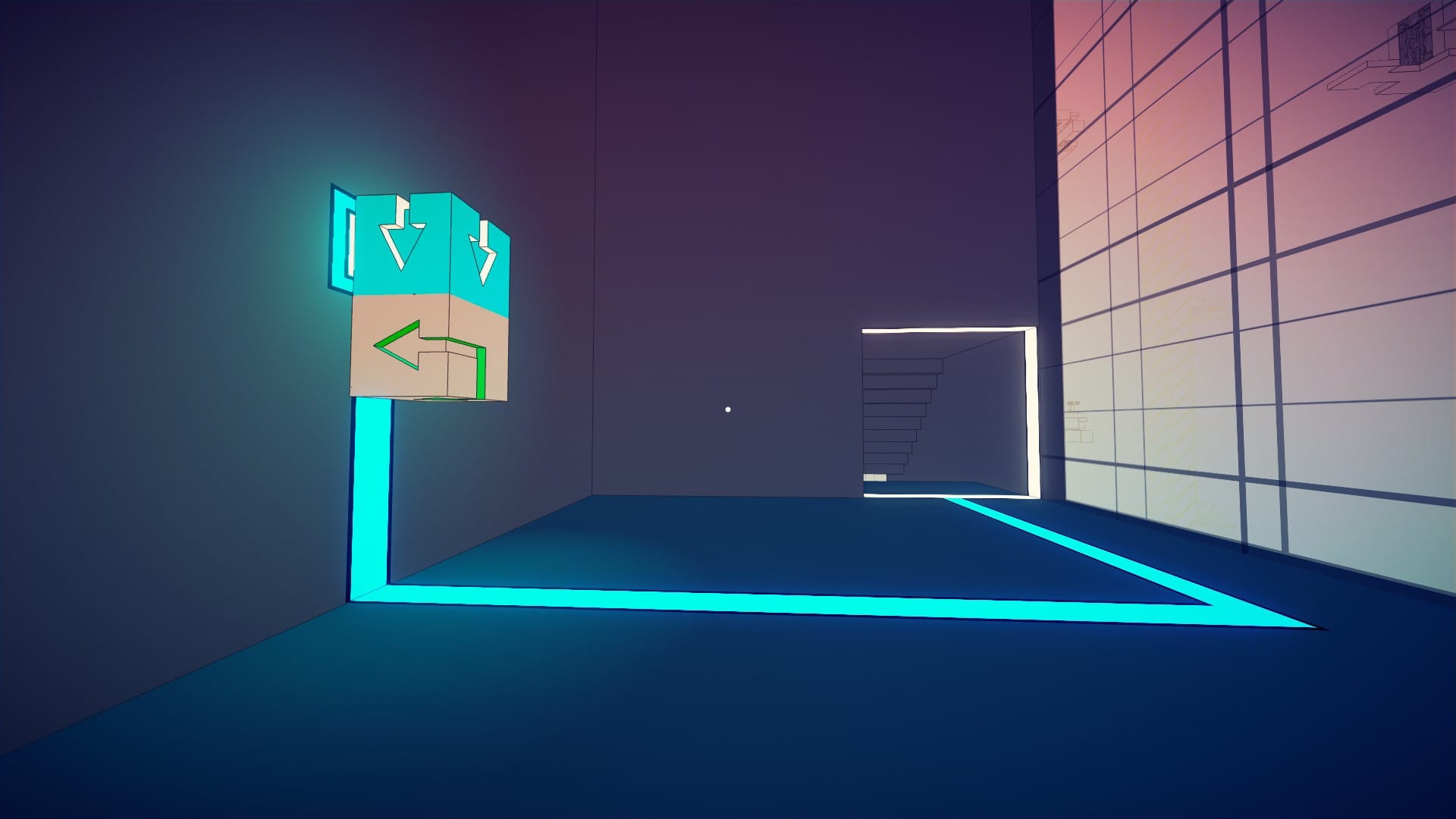Manifold Garden is a game that sits in a very rare category. Much like Antichamber, it violates Euclidian geometry in interesting and mind-bending ways. There aren't a lot of games out there like this and I was quite keen to see what it's like firsthand.
The most immediate comparison to fans of this kind of game is probably to Antichamber — at least it was for me. However, such a comparison is only skin deep. Yes, they share a similar aesthetic of glowing decorations in levels and yes they both bend the rules of reality. That's about where the similarities end and where the interesting twists of Manifold Garden begin.
Growing Your Manifold Garden
The name Manifold Garden is very literal in the sense that you actually do cause strange plants to grow at several points. Typically, these are major portions of a level's experience.
Levels are comprised of several interconnected sections. You'll often begin with a single, somewhat simple puzzle that has you trying to open a door and move forward. Once that's done, you'll encounter another puzzle, and another, and another until you reach the finale for that level.
There are three core mechanics that need to be understood in the early portions of the game. Firstly, you can stand on any surface simply with the press of a button. Walk up to a wall, press space, and you can walk up that wall. Keep heading along until you hit the ceiling and you can walk on the ceiling. In Manifold Garden, down is relative.
Secondly, many things simply won't work from certain perspectives. As an example, there are six different colors used in the game, each of which is used to represent a direction. You may not be able to move an object while standing anywhere other than on the Southern wall. This creates genuinely three-dimensional puzzles where you have to consider things from all possible perspectives.

Lastly (and far from least) is the idea of "growth". Colored blocks used to power switches quite literally grow from trees, but there is usually a hard limit. A tree might have two red arrow blocks as fruits; pick them, and you can place them in the game world. You cannot pick more, and any attempt to grab extras will erase one of the two you put down.
This doesn't just function as a limiting mechanic — it also helps prevent you from losing blocks. Drop a block into the void and you can always head back to its source tree to spring up a new one.
Progressing through the early levels is easy enough and you'll soon find new mechanics being introduced. One level brought in flowing water which can have its direction altered by placing blocks in the flow, directing it towards objects that will be activated once properly aligned. I only have roughly two hours in the game, but I imagine that more mechanics like this will be introduced as time goes on.

Closing The Loop
As I progressed through the first few hours of Manifold Garden, I noticed more than a few things (aside from the stunning visuals). Most noticeable was the fact that all geometry seemed to repeat forever. Fall off the edge of a floating building and you'll find yourself surrounded by dozens of identical structures; you'll eventually guide yourself towards a landing, finding that you haven't really gone anywhere. Some sections of a level are made slightly easier simply by deliberately jumping off and landing on the roof rather than clambering up stairs or through tunnels.
Progressing through the individual puzzles of a level is easy enough. It's when you get to the end that you uncover some sort of grand challenge. Completing it successfully will grant you a strange rainbow cube that has to be placed in a specific spot; once done, everything will go all Interstellar and you'll find yourself transported to a new area.
In my short two hours or so with Manifold Garden, I found something that was rather elegantly designed. It's definitely a mind-bendy kind of game. If you enjoy puzzle games that require some innovative thinking, then this might just be the game for you.
TechRaptor covered Manifold Garden on PC via the Epic Games Store using a copy provided by the developer.
Have a tip, or want to point out something we missed? Leave a Comment or e-mail us at tips@techraptor.net






